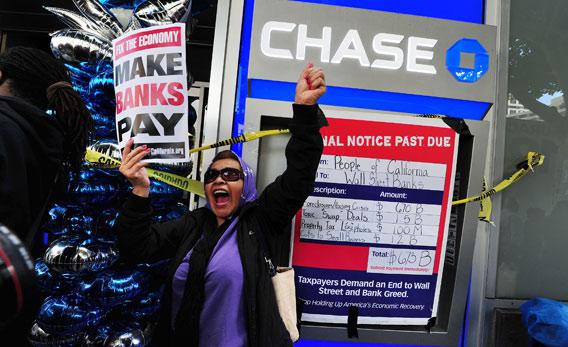The Occupy Wall Street movement has begun to spread far beyond Zuccotti Park in Lower Manhattan, throwing down tarps and tents in San Francisco, Salt Lake City, Dublin, and many other cities around the world. The originating movement chose to set up in the heart of New York City’s Financial District, as close as possible to the doorstep of its perceived enemy. Since these other cities don’t have Wall Streets, what do protesters look for in a campsite?
High visibility, proximity to banks and city halls, and a comfy lawn (if they can get it). While the seeds of new Occupy movements can now be found everywhere from Homosassa, Fla. to Turku, Finland, most protests of any significant size are located in major cities. These groups wouldn’t have much trouble locating branches of major financial institutions in their area. The Fed, for example, has 12 Federal Reserve Banks, located conveniently across the lower 48—not just its famous New York City location. Occupy protesters have pitched tents outside of many of these other banks, including those in San Francisco, Kansas City, and Chicago.
City halls and capitol buildings have also provided rallying points for protestors on the hunt, although the relationship between the demonstrators and their local authorities is not always antagonistic. Rather, some municipal sites seem to have been selected because they provide convenient landmarks, central locations, and, sometimes, hospitable turf. Los Angeles’ version of the Occupy Wall Street group, Occupy L.A., has camped out on City Hall’s front lawn. There, Mayor Villaraigosa and many other city council members have worked to be obliging hosts and hostesses, providing lush grass, encouraging words, and ponchos. Still, as Tuesday’s arrests in Boston indicate, relations can quickly sour. When demonstrators attempted to expand from their safe haven in Dewey Square into the Rose Kennedy Greenway, more than 100 Occupy Boston protesters were detained.
The Occupy movement has no central authority, preferring direct democracy and grassroots growth, so each group has chosen its site independently. Indeed, some cities have seen groups sprout up with differing opinions on where best to focus their efforts. In the nation’s capital, protesters are split between Freedom Plaza and McPherson Square, and there’s some disagreement over which group has the superior spot. A few groups, such as the one that began demonstrating at the California State Capitol in May, were using the “Occupy” name before protesters arrived on Wall Street. Occupy Atlanta began to set up in Woodruff Park as part of a long-planned event to mark the 10th anniversary of the war in Afghanistan.
Got a question about today’s news? Ask the Explainer.
